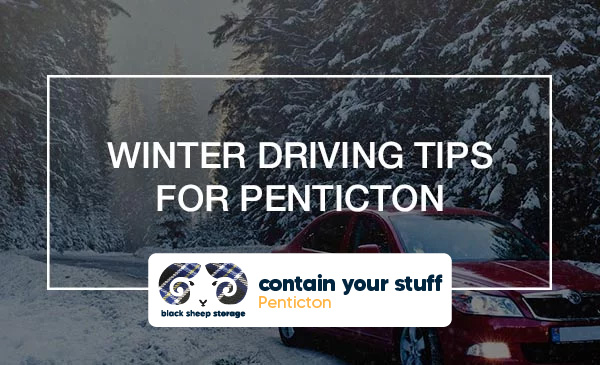Winter driving can be a challenge, especially if you live in a part of the country where snow is common, such as Penticton. But with these winter driving tips, you’ll be ready for any winter weather. Contain Your Stuff Penticton wants to make sure you are safe this winter.
Winter Driving Tips
Clear the ice and snow from your car windows before you start driving.
The first thing you should do is clear any snow and ice from your car windows. You can use a scraper to scrape off the icy stuff, or use a cloth to wipe it away. If you want to get really efficient, you can even put on some gloves (or buy them) and use both methods at once!
If there’s still ice on your windshields or rearview mirrors when you’re ready for driving again, make sure that they’re free of debris by gently wiping them down with an old rag or towel.
Keep your gas tank full so you can run the engine for heat.
When it’s cold outside and you want to keep your engine running for heat, be sure to start the car with the parking brake on. Then let your car idle for a few minutes before going about your day. After you stop at gas stations or other places where people might park, turn off the ignition and let it coast until it’s completely cool before shutting down completely so that no residual heat is left in the engine compartment.
Check your tires to make sure they have enough tread.
When you’re checking your tires for the first time, look for any sidewall cracks or bulges. You should also check that the tread on each tire is at least 1/16 inch deep and that all four tires have the same amount of tread. If you notice any problems with your tires, make sure to have them replaced immediately.
If you’re planning on driving in winter weather conditions where there’s snow and ice on the roadways (which is almost every day), it’s important to replace your car’s tires before they wear down too much—even if it means getting new ones right away!
Drive slowly and carefully, since roads are likely to be slick with ice and snow.
- Drive slowly. The roads may be slick with ice and snow, so it’s important to drive at a safe speed.
- Don’t tailgate other vehicles. If you’re behind the vehicle ahead of you, make sure that your headlights are on and stay behind them until they have passed by safely.
- Don’t drive in the dark unless necessary; visibility is limited by dusk and/or nighttime conditions (such as heavy fog).
Beware of poor visibility due to whiteouts.
Whiteouts are caused by heavy snowfall, fog and/or rain. They can be dangerous if you’re driving at night or on a road without visibility markings.
Whiteouts are usually a temporary condition that occurs when there’s a lot of snow on the ground and there’s no wind to blow it away from your vehicle. The sun is shining brightly overhead, which reflects off the white ground into your eyesight—making it hard to see where you’re going!
It’s important to be aware of the weather outside and to take precautions before you head out on the road. Remember that most provinces have laws regarding winter driving, and if you’re caught breaking those laws, it could result in hefty fines or even jail time. If needed, find a friend or family member who can watch your kids while they’re at school or daycare so they won’t get stuck with walking home alone in these cold months!








